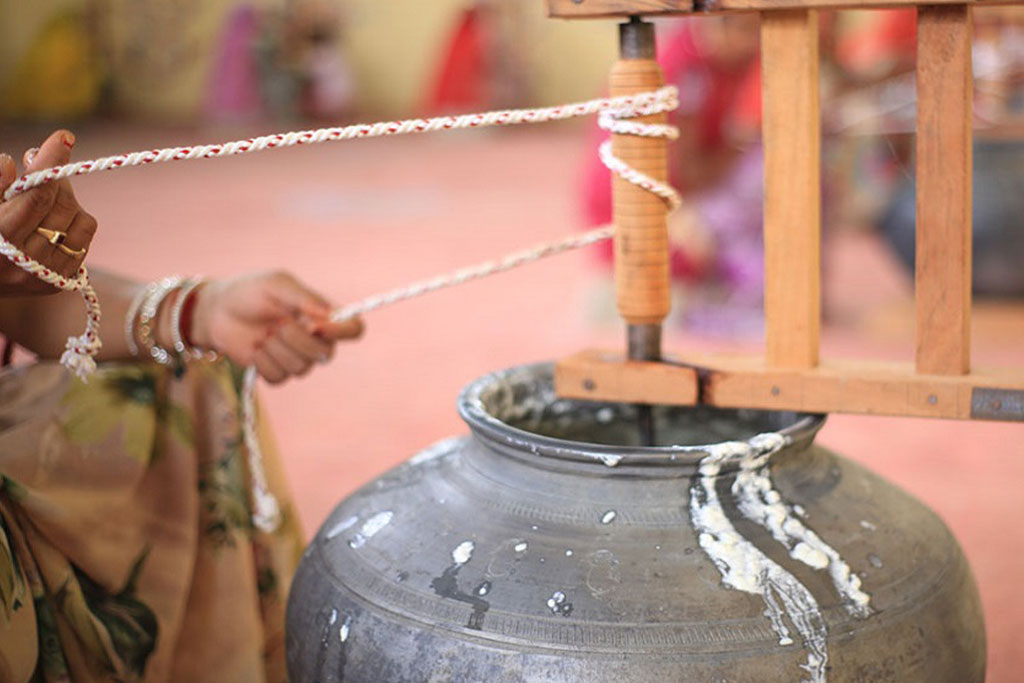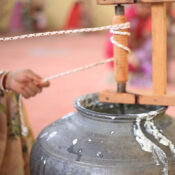
Traditional Ghee-Making Process: Why It Matters
Traditional Ghee-Making Process: Why It Matters
Ghee, often referred to as "liquid gold," has been a staple in Indian kitchens and Ayurveda for centuries. Its rich flavor, golden hue, and remarkable health benefits make it a prized ingredient in cooking and traditional medicine. However, not all ghee is created equal. The process used to make ghee plays a critical role in determining its quality, purity, and nutritional value. At Gaudham, we are proud to follow a time-honored, traditional ghee-making process that ensures the highest standards. In this blog, we explore why the traditional method matters and how it sets our ghee apart from modern alternatives.
The Traditional Ghee-Making Process
The traditional method of making ghee, also known as bilona method, has been passed down through generations and involves slow, deliberate steps. Here’s how it works:
- Sourcing Milk from Grass-Fed Cows
- It all starts with the milk. At Gaudham, our cows are grass-fed, free to graze, and treated with the utmost care. The milk produced by grass-fed cows is rich in essential fatty acids, vitamins, and minerals, which directly enhance the quality of the ghee.
- Curdling the Milk
- The fresh milk is boiled and then allowed to cool before adding a starter culture to ferment it into curd (yogurt). This curdling step is crucial as it forms the base of the ghee-making process and gives the ghee its characteristic richness.
- Churning the Curd
- Once the curd is ready, it is hand-churned using a wooden churner (called bilona) to separate the butter from the buttermilk. This butter is what will eventually be transformed into ghee. The slow, manual churning helps preserve the nutrients and enhances the flavor.
- Simmering the Butter
- The butter is then simmered on low heat until the water evaporates, and the milk solids separate from the fat. What remains is a pure, clarified fat known as ghee. This step is where the magic happens. The butter is cooked until it releases a nutty aroma and turns golden, infusing the ghee with its signature taste and health properties.
- Straining and Storing
- Finally, the ghee is carefully strained to remove any milk solids, leaving behind a smooth, clear product. The ghee is then stored in glass jars to maintain its purity and ensure it stays fresh for a long time.
Why the Traditional Process Matters
1. Preservation of Nutrients
The traditional slow-cooking method ensures that the ghee retains its essential nutrients, such as Omega-3 fatty acids, Vitamin A, E, and K, and antioxidants. Unlike industrial processes that use high heat, which can destroy these nutrients, the traditional method preserves the full nutritional profile of ghee.
2. Superior Flavor and Aroma
Ghee made through the traditional process has a richer, more authentic flavor compared to mass-produced ghee. The nutty, aromatic fragrance that develops during the slow simmering process is unmistakable and adds depth to any dish, whether used in cooking or drizzled over food.
3. Purity and Quality
Traditional ghee-making is a labor-intensive, meticulous process that ensures purity. At Gaudham, we produce small batches of ghee with care, ensuring that no preservatives or additives are used. The result is a product that is 100% natural, wholesome, and free from chemicals—something that mass-produced ghee often compromises on.
4. Ayurvedic Benefits
In Ayurveda, ghee is considered a superfood with numerous health benefits, from aiding digestion to boosting immunity. However, these benefits are only fully realized when ghee is made using the traditional method. The bilona method, in particular, is said to produce ghee that balances the body's doshas and promotes overall wellness.
5. Sustainability and Ethical Farming
The traditional process also ties into sustainable practices. At Gaudham, our cows are treated with respect, fed a natural diet, and allowed to roam freely. This ethical approach ensures that the milk we use is of the highest quality, free from harmful antibiotics and hormones, which directly affects the ghee's quality. By following sustainable farming and traditional ghee-making methods, we not only create a superior product but also help preserve the environment and animal welfare.
The Problem with Modern Ghee-Making
In today’s fast-paced world, many companies have turned to industrial methods of producing ghee, prioritizing quantity over quality. These methods often involve using high heat, preservatives, and even chemicals to speed up the process. While this might result in a larger volume of ghee, it compromises its nutritional integrity, flavor, and purity. In contrast, the traditional process, though time-consuming, yields ghee that is far superior in terms of health benefits and taste.
Why Choose Gaudham Ghee?
At Gaudham, we remain true to the traditional process of making ghee, ensuring that every jar is a reflection of our commitment to quality and heritage. Our ghee is not just a cooking ingredient—it’s a product of love, care, and ancient wisdom. We believe in doing things the right way, even if it takes more time and effort, because we know that the result is worth it.
Conclusion
The traditional ghee-making process matters because it preserves the very essence of what makes ghee a nutritional powerhouse and a flavorful addition to your meals. When you choose Gaudham Ghee, you're choosing purity, authenticity, and a product that respects both nature and tradition.
Experience the richness of real ghee—made the traditional way—by trusting Gaudham to provide you with the finest quality cow ghee.
Recent Posts
The Cultural and Religious Significance of Cow Ghee in India
Traditional Ghee-Making Process: Why It Matters
The Miracle of A2 Ghee – A Journey Through the Rich Heritage of India
+91 99131 54821
vishwashakti55@gmail.com



